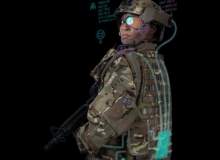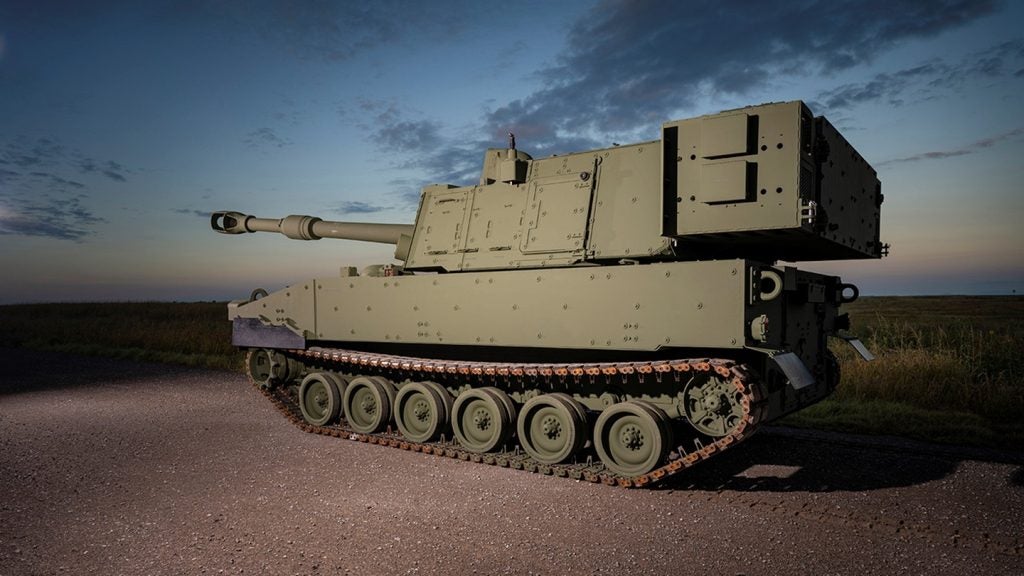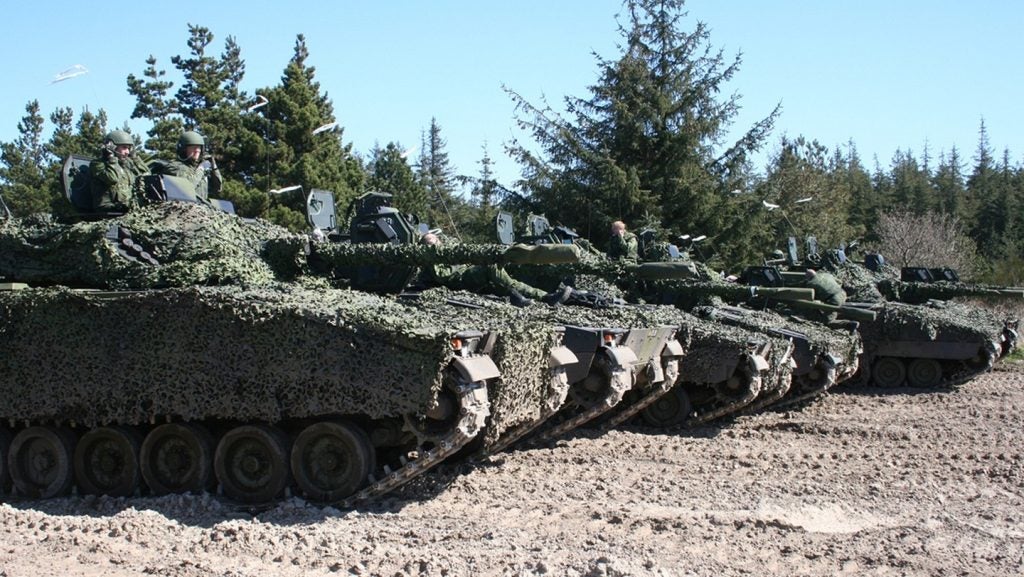

On the modern battlefield, an infantry soldier has to carry batteries for night vision goggles, thermal-imaging sights, electronic counter-measures, personal radios and GPS devices – among other things. This equipment has proved a game changer in recent conflicts, but it has also burdened soldiers with mountains of heavy batteries to keep it all powered.
Now, militaries across the world are looking at ways to decrease the amount of batteries the ordinary soldier carries, while retaining technological superiority.
Engineers working at BAE Systems’ site in Rochester have developed Broadsword – which integrates several technologies – in an effort to solve this dilemma. In its current form, Broadsword consists of a centralised battery pack, advanced wire-free conductive textiles – or ‘e-textiles’ – and connectors which can supply or receive up to 5 amps of power while communicating over USB 2.
"We’ve created a system that shares power and data through body armour, or through skeleton order webbing. It could even be built into a combat jacket," explains Paul Wright, international business development lead for soldier systems at BAE Systems. "The core of it is a smart hub that manages the batteries, and a special conductive textile that distributes the power and data to the various ports around the system."
See Also:
Australia’s troubled shipbuilding industry could be overhauled under radical proposals by the Canberra government.
How well do you really know your competitors?
Access the most comprehensive Company Profiles on the market, powered by GlobalData. Save hours of research. Gain competitive edge.

Thank you!
Your download email will arrive shortly
Not ready to buy yet? Download a free sample
We are confident about the unique quality of our Company Profiles. However, we want you to make the most beneficial decision for your business, so we offer a free sample that you can download by submitting the below form
By GlobalDataBroadsword is the culmination of several years’ worth of research into power solutions for soldiers and is one of the first examples of a major defence manufacturer giving its backing to such technology. It could mark a significant turning point in the development of 21st century soldier systems, which have historically failed to transition from research labs to the frontline.
The battery burden – lightening the load
Using Broadsword, a dismounted soldier does away with individual batteries powering each device and instead uses a single battery to power, and charge, everything. Using just one power source greatly reduces the need to carry spares and also the need for multiple charge points at remote locations such as forward operating bases.
"All your primary equipment can operate from a central battery," says Wright. "So your spare battery becomes the one installed in the equipment, you are not running off the installed battery and carrying a spare for it."
BAE Systems says the system is modular and can be modified to suit a customer’s existing equipment and preferred suppliers, or offered as a complete system. Promotional videos show Broadsword integrated in both US and UK-type load carriages. The lithium-ion battery is also conformable, which replaces the rigid case on a standard battery which significantly increases comfort for the wearer.
"We are, in my view, several years ahead of the rest of the market," says Wright.
At the heart of Broadsword is the ‘spine’, an intelligent power and data manager which, when coupled with the product’s e-textile, sends data and power to the different connectors. Using a smartphone app, users can monitor the system and check how much power is left in their central battery and which connectors are being used. It gives soldiers much more control over energy usage; they can even choose to switch different connectors on or off depending on tactical scenarios and battery usage.
BAE Systems is currently working with three SMEs on Broadsword, including Intelligent Textiles for the e-textiles, Denchi Power providing the conformable batteries, and Cynetic Designs, which is developing a special inductive charging pouch to enable wireless charging.
Replacing cables – becoming wire-free with smart textiles
The companies have worked together before on a Ministry of Defence research programme – known as Man Worn Power and Data (MWPD) – which investigated replacing traditional cables and connectors found on Dismounted Close Combat communication equipment.
Broadsword significantly reduces conventional cables – which are often bulky, heavy and inflexible – by using patented conductive materials made by UK-based Intelligent Textiles. E-textiles does not simply mean inserting cables within the materials; the technology is much more advanced. Unlike the bundled filaments in a standard cable, the filaments in the e-textiles are reconfigured into a flat plane and incorporated into the fabric.
Is there nothing the Royal Navy’s Type 45 destroyers can’t do?
With this configuration, BAE Systems says Broadsword is ‘wire-free’ but not ‘wireless’. Why is this distinction important? "Wireless is like Bluetooth," explains Wright. "You’re using radio signals to transfer information through the atmosphere. You can’t do that on the battlefield, you don’t want to be putting out random radio signals because if you’re up against a modern, sophisticated enemy they will detect you."
The smart fabric, which uses conductive yarns, has already been incorporated into several products before Broadsword, explains Intelligent Textiles director Asha Thompson. Still, it’s the first time the small company has worked with a large defence manufacturer.
"It’s interesting," says Thompson. "It’s David and Goliath, we are tiny niche company that work out of Surrey and we’re working with these multi-nationals that have got marketing departments as big as an army."
Intelligent Textiles was founded in 2002 by Thompson, a textiles expert, and scientist Dr Stan Swallow. Both were working at Brunel University at the time and, using their respective expertise, developed a body-worn voice communicator for a person with cerebral palsy known as the ‘talking waistcoast’.
Since then, Thompson and Swallow have branched out and identified areas where their technology can benefit individual soldiers. They initially worked with the Canadian military but have since received funding from the UK Government’s Centre for Defence Enterprise, which is part of the Defence Science and Technology Laboratory.
A time to reflect – post-Afghanistan capabilities
Thompson admits that militaries have been slow to adopt integrated, weight-saving technologies such as Broadsword.
"Soldiers are carrying too much kit and they need to lose weight from the kit…I don’t think it’s happened as quickly as people imagined it would," says Thompson. Part of the problem, she explains, has been the reliance on urgent operational requirements, where vital equipment has been rushed to theatre without properly considering how that equipment will integrate with other systems – a scenario often referred to as the ‘Christmas tree effect’.
The end of operations in Afghanistan this year will allow some "breathing room" for defence planners as they reassess capabilities, predicts Thompson. It will also give researchers and manufacturers the chance to think more about integrating soldier systems, rather than concentrating on individual bits of kit. "It’s lining everybody up and talking to each other and thinking about it holistically rather than independently," says Thompson.
Intelligent Textiles already has orders for 2015 and Thompson predicts her smart fabrics could be fielded as early as next year.
In a sign of confidence in the technology, BAE Systems and the three UK SMEs have invested their own money on top of investments by several governments. "We are now taking it to the next stage of development with government funding from other countries to address their particular requirements," says Wright. Although BAE Systems has not confirmed the countries, the US military and some European armies are thought to be evaluating the system.
After being announced at this year’s Eurosatory in Paris, Broadsword was also displayed at Farnborough Air Show and several other international exhibitions.
Looking ahead, Broadsword could be linked up with other future technologies such as the Q-Warrior system, the revolutionary heads-up display for dismounted soldiers which was revealed last year. That is not likely for several years, admits BAE, as land forces would have to adapt their supply chains, maintenance procedures and training regimes. That process takes time and is another reason why the adoption of newer power solutions has been slow.
But with technologies maturing and the withdrawal from Afghanistan focusing minds on future capabilities, the conditions may finally be right for introducing innovative power technologies such as Broadsword.
Follow Grant Turnbull on Google+


.gif)



